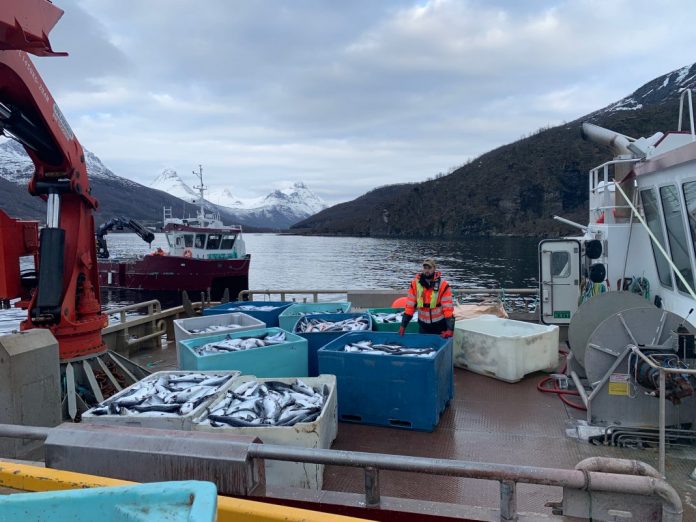Heavy losses and persistent mortality, especially in the Ofotfjord, Northern Norway.
The toxic algae that hit parts of Troms and Nordland regions last week have continued to inflict loss of fish on the fish farms during the weekend. In an update from the Directorate of Fisheries, it is stated about persistent mortality in the Ofotfjord in Nordland. However, there has been no spread to new sites.
“At the sites that have been affected, work is being done to pick up and grind dead fish. Sufficient ability to handle the situation is reported. The most limiting factors at the moment are stated to be storage capacity and milling speed,” writes the Directorate of Fisheries on their websites.
Weather dependent
In Troms, salmon farmers have reported a quieter situation, and during Saturday afternoon the Directorate has been told that mortality is no longer registered.
It is difficult to say how long the bloom can last in the area. A bloom is affected by the transport of algae into the area from outside areas as well as local growth. The algae rely on nutrient salts to grow and increase the amount. If the algae do not have access to these substances, they will eventually die out. In some cases, it has been seen that the bloom has been kept in the fjord and died out inside, without them spreading over larger areas.
Weather conditions may affect duration. This weekend there has been quiet weather in the area.
Follows the flow
“By looking at the water flows we make models that give a picture of where the algae will spread. Initially, they will be spread to neighboring areas,” says researcher at the Institute of Marine Research, Lars-Johan Naustvoll, to national broadcaster NRK.
The whole of the Astafjord has so far been attacked, and the water flows will bring along the algae northwards, says Naustvoll.
“The algae bloom that takes place inside the fjord will spread with the flow towards Salangen and Mjøsundet. On the outside of the Astafjorden there are also several fish farms that can be affected,” he adds.
“Nor is it ruled out that the algae can spread to other areas, regardless of the current.”


